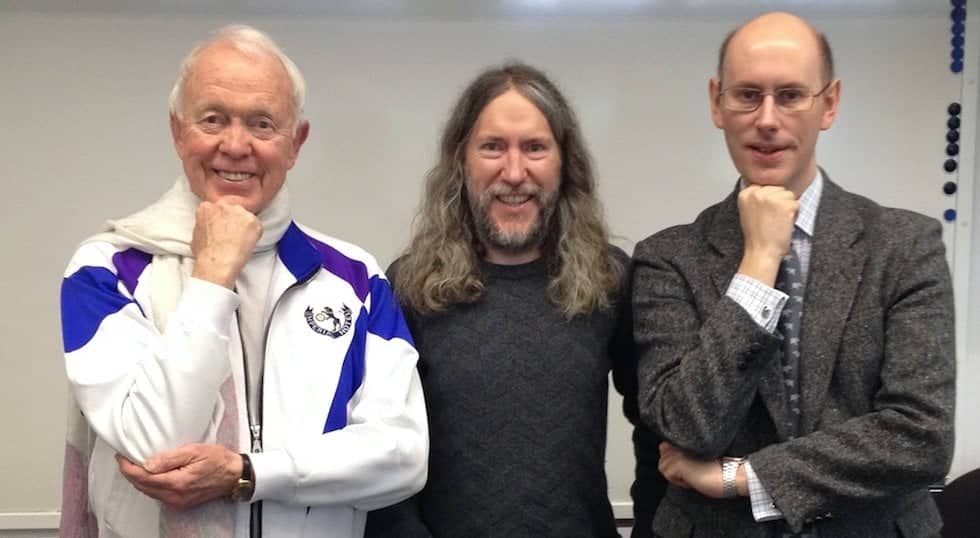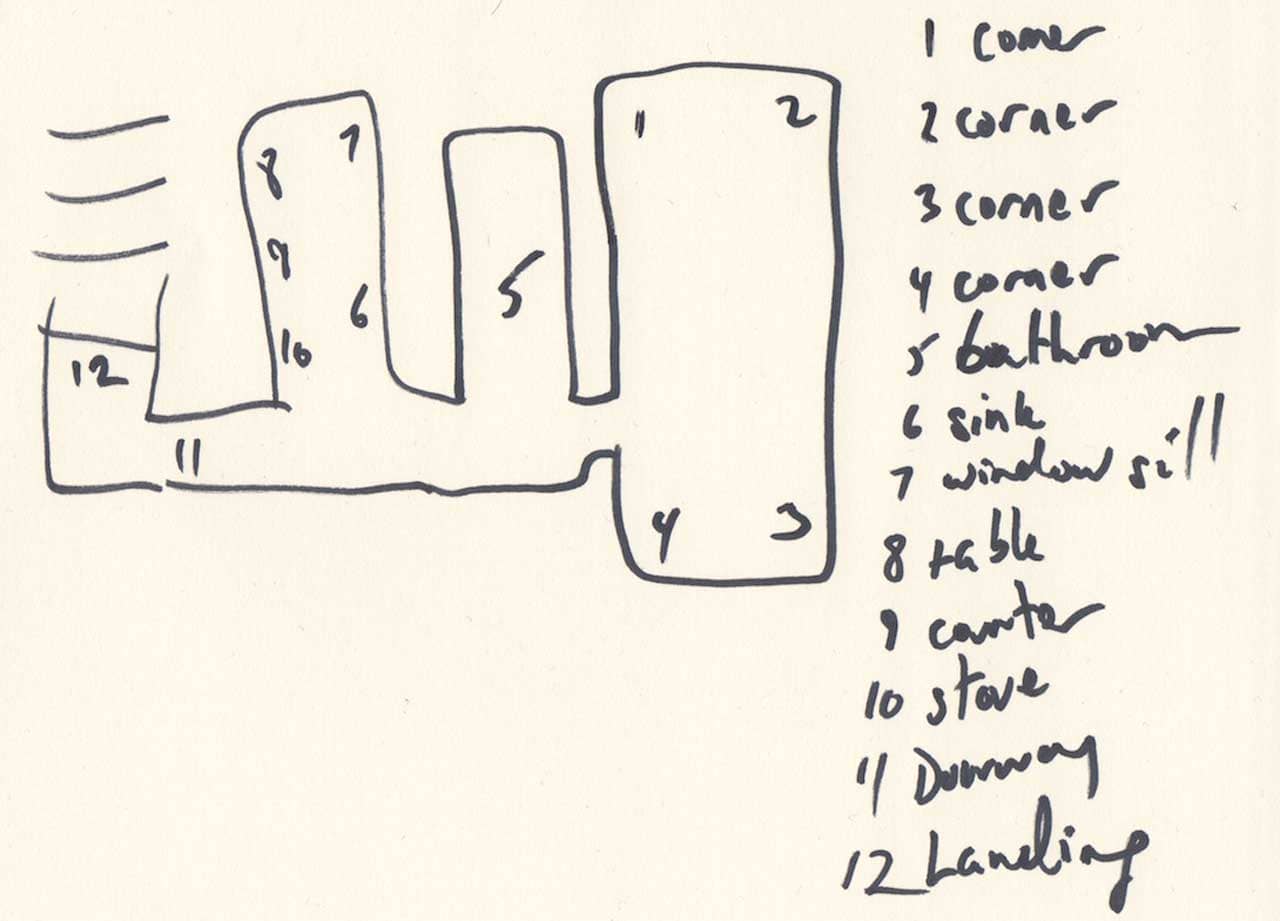 When you’re searching for good information on how to memorize something fast, you need to brace yourself for impact.
When you’re searching for good information on how to memorize something fast, you need to brace yourself for impact.
That’s because a lot of people give advice in this area who have no idea what they’re talking about.
For one thing, they’ve never been to a memory competition, let alone completed a degree.
And if they do have learning credentials, chances are they haven’t used memory techniques.
Of course, there are some good ideas out there, and I’ll share them with you on this page.
But you want more.
You want to know not only what memory experts say. You want the lived experiences of people who actually know how to memorize things fast.
And that’s what you’re going to get based on my experiences as a PhD, university professor and professional researcher.
Oh, and yes, I’ve done well at a memory competition.
But it’s much more that I’m able to share with you all I know about memorizing for exams fast.
That way, you’ll have the truth about applying mnemonic devices for quick recall that many other people in the field of “speed memory” are scared to tell you.
Ready to discover what really works? Let’s dive in!
Want to know what this post will cover?
- The Best Way To Memorize Something Fast: Beyond The Myths
- How to Memorize Quickly: The 5 Steps You Need To Complete This Week
- How to Memorize Like a Memory Athlete
- Remove The Obstacles Between You And Your Need For Speed
- How To Memorize Something Quickly
How to Memorize Something Fast: Beyond The Myths
The first thing you need to do is to change how you think about the “best” way to memorize.
Let me give you a personal example:
When I was in graduate school and constantly memorizing for exams, I didn’t need to ask, “How can I memorize things quickly?” That’s becasuse I already knew one simple fact.
What you really want involves more than just mnemonic tools for memorizing numbers and information like historical dates. What you want is effective processes.
This fact has a few consequences (good ones, I promise, if you keep reading everything on this page):
- You might need to sacrifice efficiency for a short while in the beginning
- You might feel yourself stretched and challenged
- You might find be confused by conflicting ideas you find online
- You might have initial results and then quickly plateau
In each of these cases, there are solutions.
The Shocking Truth About The “Best” You Need To Hear…
First, the “best” memory techniques are always the ones you’re actually going to use. That means you might have to try a few on for size. This means doing some research and making a plan of action for how long you’re going to stick with each memory training. (I suggest 90 days minimum per memory improvement book or course.)

When that challenge starts to kick in, it means you’re growing. Having a plan will help you keep going – and avoid all the clashing recommendations available on the internet. For example, some people will tell you to discover your “learning style.”
A Fact About Your “Learning Style” That Is Probably Slowing Your Down
In reality, we all have multiple learning styles. The trick is to find out what your learning preferences are and then work to improve these and patch in those you’re avoiding.
If you prefer audio, then your goal is supplement reading. If you prefer reading, then you want to make space for verbal and physical learning styles so you can learn and remember with greater speed. (More on how to do this below.)
In sum, taking action is your best bet, and making sure you have a path to consistent action is best.
Being subscribed to the Magnetic Memory Method blog, podcast and YouTube channel are great ways to ensure you keep getting the ongoing training and encouragement you need as you work things out.
How to Memorize Quickly: The 7 Steps You Need To Start Following
I’m going to share with you the seven steps I followed to not only pass my PhD at York University with flying colors.
Following the steps below also helped me memorize the many lectures I delivered at three different universities. They’re the same steps that helped me learn languages, deliver my TEDx Talk from memory and even write books faster.
Everything starts with you learning how to use proper Memory Palaces.
Although it’s an ancient memory technique, I can’t stress mastering the Memory Palace technique strongly enough for people who want to memorize rapidly.
You’ll also want to learn the tools of association for numbers, symbols, and words. These mnemonic devices, which are typically used inside of Memory Palaces, include:
- The Major System or The Dominic System
- The Pegword System
- Elaborative Encoding Exercises
Next, I’ll show you how to use Recall Rehearsal, or what scientists call spaced repetition. This process is how you will use the Memory Palace technique to get the info into long term memory.
Keep in mind that you will need to practice the techniques consistently, always using an effective Memory Palace practice routine.
Consistency is key because if you keep bopping around the internet looking for the next “shiny new memory technique,” you’re delaying the development of learning and remembering quickly.
Mission One: Create Your First Memory Palace Network
To do this, create 26 Memory Palaces, one for each letter of the alphabet. If you speak a language which has fewer or more letters, I still suggest you have at least 26.
Why?
Because this will train your brain to rapidly make associations between spatial memory and semantic memory content based on words.
For example, when you see a word like “electron,” you instantly want a Memory Palace related to ‘E’ popping into your mind. In my case, I have several, everything from my brother’s house to a concert hall where I once saw a band with a drummer named Ernie.
Mission Two: Create Magnetic Imagery
To get really fast, you want to fill your Memory Palaces quickly. For that, you need to have at least one image per letter of the alphabet, ideally 2-5 (or more).
For example, to rapidly place “electron” in an “E” Memory Palace, I can use “Elvis.” But I can also use an elephant, Einstein or Eric Stolz who appeared in Pulp Fiction.
The more you think about the alphabet and train yourself to come up with associations based on the alphabet, the faster you will become.

Pro tip: Many of us develop a “double alphabet.” For example, I gave the example of Elvis for “electron” and that is because in addition to having images for every letter, I’ve done some work to develop images for two-letter combinations.
A = Apple
Ab = Abacus
Ac = Accountant
Ad = Addiction
In each case, the words are generic, but they actually point to specific multi-sensory images. The apple is a Mac Computer, the abacus is a toy I had as a kid, I imagine my accountant, and Addiction is a song by Skinny Puppy.
I know this is a lot of front-loaded effort, but if you really want to memorize fast, the setup is everything. We call this the Principle of Preparation in the Magnetic Memory Method Family.
Mission Three: Build Your 00-99 PAO
We’ve talked about memorizing words by creating systems of association based on the alphabet.
But what about numbers?
For that, you’ll want a Major System or the Dominic System to help you have associations for every number, ideally in pairs from at least 00-99. I’ve shared my associations on the Pegword Method page.
Pro tip: It’s also worth the time to prepare a system for associating symbols. For example, you can use Pac-Man facing east for an open parenthesis and facing west for a closed one. You can use a star for an asterisk and Cookie Monsters googly eyes for the percent mark, etc.
Mission Four: Study the Tradition
No matter how fast you get, two things will remain true:
- You can still get faster
- Someone else will always be faster no matter how fast you get
Personally, I never turn my speed into a competition. However, I modestly strive to learn as much as possible. That’s why I continually study the ancient memory techniques and read all the new books that I can.
In other words, true “speed demons” of memory always assume that they don’t know what they don’t know. Then they plan to fill those gaps.
Some truly EPIC memory speed secrets are hidden in old books like:
- Rhetorica Ad Herennium (author unknown)
- Aristotle’s On Memory
- Aquinas’ Summa Theologica
- Bruno’s On The Shadows Of The Ideas
- Dickson’s The Hermetic Art of Memory
And this is just scratching the surface! You can even pick up tips from people Simonides of Ceos from whom no written texts survive.
The more you study, the more little tips and tricks you’ll discover that will shave seconds off your speeds.
Mission Five: Extracurricular Activities
Most of us apply memory techniques to learning languages and professional matters like passing the bar or getting a raise at work.
But to truly amp up your speed, I suggest taking on a few supplementary memory exercises, such as:
- Memorizing playing cards. (MMM student example – YouTube)
- Memorize 100 digits of pi (MMM student example – YouTube)
- Memorize long-form poetry (Example from me – YouTube)
Mission Six: Understand & Use Active Recall With Spaced Repetition
The various mnemonic tools I’ve shared with you above need to be used in combination with processes that you deeply engage in with intention.
For example, this study shows how important it is to practice what scientists call “retrieval practice.”
Memory scientists use another term just as frequently to describe deliberately making yourself recall information. It’s called active recall.
Another way to think about this approach is that you are “overlearning” the material through self-testing. I did this a lot in university by using spaced repetition in combination with Memory Palaces. I repeatedly went over key facts in my mind by revisiting my Memory Palaces.
Spaced repetition is particularly powerful because it leaves various intervals of rest time between when you challenge yourself to recall information. So although self-testing is ultimately about enhancing memory under stress you take on by choice, rest periods are just as important.
How do you know that this process works, apart from me just saying so? Countless studies demonstrate the validity of using spaced learning technqiues.
For example, Shana Carpenter’s definitive research in Nature summarizes the most important studies. You should also be aware that spaced repetition has been validated by studies for a very long time. Edwina Abbott’s classic 1909 study is well worth a read, to take just one historical example.
In my view, this learning principle was even mentioned by Aristotle.
Mission Seven: Master Visualization Techniques For Memorization
I’ve talked about visualization a few times today.
There are a lot of ways to work on this, and it’s absolutely that you can assign mnemonic images quickly while studying. As this study shows, students who use visual mnemonics continually outperform those who do not.
For example, when I was applying memorization techniques for language learning while studying for my level III exam in Chinese, I needed to be able to create mnemonic associations very quickly.
To do that effectively, I trained by completing these visualization exercises a few times a week.
I also practiced visualization by creating my own, heavily-personalized flashcards. They look like this, are provide fantastic training for both short-term and long-term recall:
Notice that using flashcards in this manner is not about art. In 2-5 minutes topics, you can use this memory hack to not only get the most out of the principles of active recall we just discussed.
You can also place your flashcards in Leitner boxes, which help you properly space out your reviews. So when you practice your visualization, you’re not only learning to associate faster. You’re also committing the target information you want to recall into your long-term memory much, much faster.
But what if you want to go further than the memory science and practical findings we’ve just discussed?
How to Memorize Quicker (Like a Memory Athlete)
Nelson Dellis told us a long time ago how to win the USA Memory Championship. One of the best takeaways is that you need to actually practice competition.
John Graham, who has also won the USA competition, stresses the need to take on additional challenges as you train. The suggestions he gives are like the equivalent of putting on a concrete backpack and performing pushups – they will make you faster!
Alex Mullen shocked the world by memorizing cards in pairs using a variation on the Major System. If you want speed, make sure to listen to his tips.
Braden Adams is a very interesting upcoming figure you’re going to want to pay attention to – and he has great ideas about a memory technique called the “Shadow.”
And don’t let age stand between you and success. James Gerwing retired from his profession and then became Canada’s 2019 Memory Champion. He has truly proven that you never have to slow down.
Remove The Obstacles Between You And Your Need For Speed
We’ve gone through the technical factors needed to memorize quickly and then speed up. I’ve also given you resources from some of the fastest memory athletes on the planet.
Now it’s time to focus on refinement.
You see, mental processing speed isn’t just about technique. It’s also about lifestyle.
For that reason, you want to improve your:
- Sleep
- Diet
- Physical movement
- Mental strength
- Creative Imagination with multi-sensory visualization
Let’s go through each:
Optimizing Sleep for Speed Memory Gains
You already know all about having a bedtime ritual and getting enough hours of shuteye. If not, here are the important details you need when it comes to sleep and memory improvement.
But what about keeping a journal beside your bed to capture your dreams? And why on earth do that?
Well, on top of removing all devices from your bedroom and making sure you spend enough time in darkness, you can train your brain to make mental imagery faster by writing down your dreams.
To get started, start writing down the following each night: I will remember my dreams. Then, the following morning, write down what you can remember with a special focus on all of the sensations you experienced.

For example, the other night I dreamed that Tony Buzan and I were in a university of memory training. There was some kind of nuclear emergency and showed me how to work the fire hoses to release a special liquid that would protect all the students. I wrote this down and took a moment to:
- Feel the hose in my hands (Kinesthetic association)
- Hear the sound of Tony’s voice (Auditory memory)
- See the building and the people in it (Visual association)
- Experience the emotions (Emotional association)
- Explore the concepts (Conceptual association)
- Imagine the tastes and smells (gustatory and olfactory association)
- Spatial descriptions (association of heigh, size, depth, distance)
As you journal your dreams, thinking through all of these sensations and levels of association will transfer into your skills with using mnemonic devices.
Optimizing Your Diet For Faster Memory
Diet is highly personal and best conducted with a professional. Generally, though, you want to cut out all foods that create brain fog. You also want to explore natural memory supplements instead of plunking down hard cash on potentially poisonous or ineffective supplements.

But you can also optimize your diet for faster memory by practicing your tools while eating. So instead of just shoving broccoli into your mouth, count how many pieces of it you have on your plate. Then use your number system to memorize that number. And think of all the Memory Palaces and images for B and BR you can come up with during the meal – literally practicing your mnemonic visualization skills using the word for the food you’re eating.
Every ounce of practice means that every ounce of food can help you learn and remember at greater speeds in the future.
Optimizing Physical Movement For Accelerating Your Mental Processing
Not only can you turn your gym and favorite walks into Memory Palaces. You can also spend the time practicing your speed of mental association.
For example, as you walk your neighborhood, name the items you see and associate. Don’t just see a tree – think “tree” and then think of Trevor, trippin’ out, trucks, trick or treat, and everything you can muster.
Combine this simple association exercise with neurobics and you’ll be amazed by how fast you can get.
Optimizing Your Mental Strength
All these activities might sound like a ton of effort just to memorize faster.
No pain, no gain, right?
Well… what if you could speed up your memory without pain?
You can, and to get there, you’ll want the mental strength tools that help you get past the mental noise that’s holding you back.
One quick tip is to spend some of your time visualizing the goals you have for memorizing faster – and then be radically honest about whether you actually have the skills needed.
If you do, great! If not, then forge a plan for how you’re going to get those skills. Make sure you’ve mastered the fundamentals and followed all the other tips on this page. You now have a structured path and if you need help, ask questions. There’s a place to post them below. And if you need more, try these brain exercises.
Optimize Your Creative Imagination For Maximum Velocity
I’ve saved the most powerful tip for last:
You don’t have to be creative.
In fact, real success from memory techniques means removing creativity from the equation. As the processes and examples above have shown, lightning-fast memory comes through association.
And those associations are not invented. They are discovered through practices that make it fast and easy to access information that is already in your memory.

When I see a pillow in the shape of the letter G, I don’t practice creating new words. No!
I think instead of Grover Cleveland, the 22nd president of the United States (here’s how to memorize the rest of the presidents). I don’t invent the mental image of him and his moustache – I practice accessing it faster.
Likewise, I think of Grover from Sesame Street, giants from various stories I’ve read, the character “Gas” from David Cronenberg’s eXistenZ and as many more associations as I can muster.
And the speed of it comes from consistent, unrelenting practice. Not just any kind of practice, but multidimensional practice.
That means making sure I hit all of the following mental experiences:
- Kinesthetic (the feeling of what it’s like to be Grover Cleveland physically)
- Auditory (the sound of signing a new piece of legislation)
- Visual (the look of the clothes from the 1800s and early 1900s)
- Emotional (the feelings of having the hardest job in the world)
- Concepts (the many legal and constitutional ideas I would have to weigh)
- Olfactory (the smells of my favorite foods in the White House kitchen)
- Gustatory (how the same taste)
- Space (walking the White House gardens)
It’s not just that practicing all of these “Magnetic Modes” will make you faster. You also want to practice them so that you use them faster in real-time.
Every time I meet a new person, I go through each within seconds – or at least as many as I feel I need. More practice and more dimensions means greater speed.
How To Memorize Something Quickly
In conclusion, let me make this power tip loud and clear:
Memorizing “something” sounds awfully vague.
Instead of memorizing unclear and vaguely defined things, spend some time and get really clear on your learning goals and desired outcomes.
Have a vision and a plan for becoming a proper mnemonist. And ask yourself:
What does it matter how fast you go if you’re traveling in the wrong direction?
Far too many people want faster memory for undefined reasons that have no structure or roadmap to support them. You find the same people who want to read faster.
Frankly, it’s worth repeating the cliche that failing to plan is planning to fail. But now you don’t have to worry about such sad results.
You know exactly what it takes to remember as much as you want at a clip so fast it will make your head spin – in a good way, of course!
And if you need more help, I’m happy for you to sign up for my free course here:
It gives you four video tutorials and worksheets that will help you improve the speed of your memory.
So what do you say?
Are you ready to use what really works when it comes to committing important information quickly?
Let’s do this thing!
Related Posts
- Memory Loss Story And Memory Recovery Tips With Jennie Gorman
Memory loss is frightening. However, the solution may be simpler than you think. Jennie Gorman's…
- How To Remember The States: A Step-By-Step Guide
Learning how to remember the states is fun and easy. Here are three powerful ways…
- How to Improve Short Term Memory: 7 Easy Steps
Many people think you cannot improve short term memory. In truth, you can. Enjoy these…








18 Responses
This is so helpful! I have read about Anthony’s Memory Palace technique but haven’t had time to put it in action. This definitely will get me going.
Sue
Thanks for stopping by, Sue.
Tor has definitely given us the cutting edge approach to finding time for memory development in our lives. 🙂
Is there anything in particular you’d like to memorize?
Hi Anthony,
I’m so grateful. This was fun reading! 🙂
Tor
Thank you so much Tor! Some greatly appreciated and excellent advice! Really appreciate it!
Thanks for the comment, Angie!
My pleasure. I know this is going to help a lot of people who struggle to find time for memory techniques. Much appreciated!
I used to THINK that I didn’t have the time to learn how to memorize things too.
I couldn’t have been more wrong! 😉
It took me 10 minutes to create my first Memory Palace and additional 30 minutes to remember 8 things.
It was fun, quick and really useful!
These are great times, Tor.
To what extent do you think the MMM guidelines helped reduce the time investment? Could you estimate how much time it would have taken without them?
Definitely good advice to use only important and useful information for practice. No shopping lists – unless you’re a chef! 😉
Awesome tips! Made me eager to revisit that old and dusty memory palace I’ve created a few weeks ago and never used. Thanks, guys! Keep up the great work.
Thanks for stopping by, Brunno.
Definitely get that Memory Palace up and running. You’ll be glad that you did!
i want to apply this technique in next 15 days .i have only that much time left now. would i be able to rem at least 500 formulae in this much time. i am a student of mechanical engineering and preparing for an exam called gate 2016 which is scheduled on 31st jan 9 am to 12 pm
please help
asap
Thanks for your question, Suyash.
Depending on your current level of experience, you have a reasonable amount of time to at least memorize a good amount of these formulae. Do you already know the Major Method? Having that tool will be essential.
After that, it’s a matter of having your Memory Palaces in place. Each one should take no more than 5-10 minutes to construct.
Again, depending on your level of experience, I’d suggest starting with just one and give it at least 10 stations. Use it to memorize 10 formulas (or perhaps 8 depending on how you use your stations). Then practice solid Recall Rehearsal and get the formulas into long term memory.
Following that, use the time management tools offered in this post and repeat the process. You can make Memory Palaces with many more stations than 10, but always scale back if you’re not getting the desired outcome. You’re always better off getting results than trying to cram it all in.
And in the future, please understand that Memory Palaces and the art of memory overall is definitely a “dig your wells before you’re thirsty” strategy. With a bit of solid preparation, you can work miracles with your mind. When some time frees up for you, check out this post on The Memory Palace of Matteo Ricci to get an idea of just how much you can achieve with your memory.
Hope this helps! 🙂
Anthony, what a fantastic post! That is such a detailed article, I can`t wait to dig deep and start utilizing the resource you have given me. By the way the tip for creating more time – awesome!!!
Glad you liked this article and look forward to hearing how you use this info to both increase your memory and free time. Thanks for stopping by to read and post! 🙂
I wanted to memorize many facts so I want to have many palaces. But I don’t know how to create it
Thanks for stopping by.
Please complete the free course offered at the top of this page. It walks you through completing a full Memory Palace Network.
It was really helpful for me and my brother.
Thank you.
Glad you found it helpful!